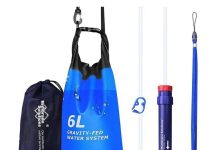Vibrating screeners are required by a huge number of businesses across many different industries nowadays. From fine food to pharmaceuticals to metal powders, there are a whole host of uses for industrial screeners. This is why there are an enormous number of screeners to choose from. All you have to do is take a look on the web to see the options that are available. Of course, choice is a great thing, but it can be a little bit overwhelming for those that have never purchased before. From various sizes to different configurations, how are you supposed to know which sieve is going to be right for you? Luckily that is what this post is here to help you with, so keep on reading to discover everything you need to know.
The type of vibrating screener you choose is one of the most important decisions. Various sieves have been created with different applications in mind and it is imperative that you choose the right one for your requirements. For example, if you require a sieve for products that are very fine, toxic, airborne and dusty, then you should consider a vacuum aided screener. These are ideal for situations when there is the worry of contamination to personnel and the atmosphere. However, if you need a sieve for the food industry, then why not consider a linear screener? These are ideal for the likes of spices, vegetables and other food products because they can de-dust and de-water products that have a high proportion of oversized material. When it comes to fine powders, ultrasonic sieves are a recommended choice because they boast a very fine vibration amplitude. This merely scratches the surface of the options that are available.
It is also a good idea to do your research regarding the manufacturer and the general feeling that surrounds the sieve, i.e. what have previous customers had to say about it? It is always a good idea to read reviews, as you will be able to get an understanding as to whether the screener is really worth investing in. It is also recommended to go for a manufacturer that has an impressive reputation in the industry, as this represents a large investment and you really can’t afford to take risks.
Aside from this, there are many other attributes of the screener that you should consider. For instance, is the machine designed for wet or dry materials? What about gasket & joint sealing? Does it use single-frequency or multi-frequency technology? You should also think about the impact the screener is going to have on your business and your levels of efficiency. Will it reduce the amount of waste you produce? Will it have an impact on the amount of energy you consume? Will you be able to create new revenue streams? These are all aspects you need to consider when choosing the best vibration screener for your needs.
If you take all of the points that have been mentioned into account, you should have a great starting point for narrowing down your search when looking for the best vibrating screeners.









































